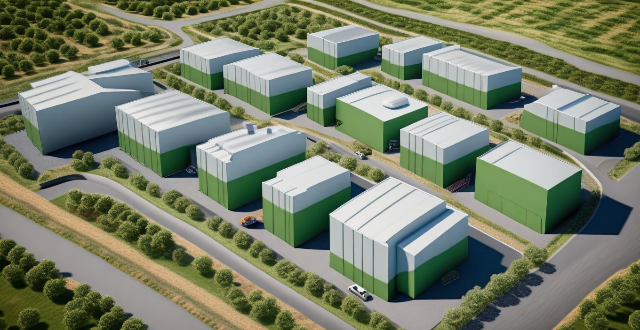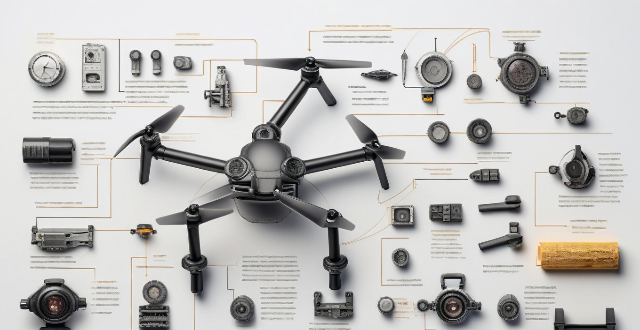Technology Capture

How can we improve carbon capture technology to make it more efficient and cost-effective ?
Carbon capture technology is a crucial tool in the fight against climate change. However, the current state of this technology is not yet efficient or cost-effective enough to be widely adopted. To improve carbon capture technology, we need to enhance efficiency and reduce costs through advancements in material science, optimization of processes, integration with other technologies, direct air capture, economies of scale, government incentives, private investment, improved maintenance and operation, and continuous research and development. With these efforts, we can make carbon capture technology accessible and practical for widespread use in the fight against climate change.

What are the potential benefits of carbon capture technology for the environment ?
Carbon capture technology can help reduce greenhouse gas emissions, improve air quality, encourage economic growth, and enhance ecosystem health. It has the potential to mitigate climate change, meet emission reduction targets, enhance energy security, reduce pollutants, protect human health, create jobs, stimulate innovation, promote clean energy, protect biodiversity, preserve natural resources, and restore degraded landscapes. Investing in carbon capture technology may prove to be crucial for creating a more sustainable future.

Can carbon capture technology be used in conjunction with other renewable energy sources ?
Carbon capture technology can be used with renewable energy sources to reduce greenhouse gas emissions and mitigate climate change. There are several ways that this technology can be used, including post-combustion capture, pre-combustion capture, oxy-fuel combustion, and chemical looping combustion. However, there are also challenges and considerations that must be taken into account, such as cost, energy requirements, and storage.

Is carbon capture technology a viable solution for industries with high carbon emissions ?
Carbon capture technology (CCT) is a process that captures carbon dioxide (CO2) emissions from burning fossil fuels and stores it to prevent its release into the atmosphere. This technology has been proposed as a solution to reduce greenhouse gas emissions from industries with high carbon footprints. However, there are both advantages and challenges associated with CCT. The primary advantage of CCT is its potential to significantly reduce greenhouse gas emissions from power plants and other industrial processes by capturing up to 90% of CO2 emissions. It also allows the continued use of fossil fuels while reducing their environmental impact, which is particularly important for countries heavily reliant on coal or natural gas for their energy needs. Additionally, the development and implementation of CCT could create new job opportunities in research, engineering, construction, and operation of these facilities. However, one of the biggest challenges facing CCT is its high cost. The installation and operation of carbon capture systems can be expensive, making it difficult for many companies to invest in this technology. Carbon capture processes also require energy, often from burning more fossil fuels, which can lead to a net increase in CO2 emissions unless the energy source is renewable. Once captured, CO2 needs to be transported and stored safely, requiring infrastructure that does not currently exist in many regions and raising concerns about leakage and long-term storage solutions. In conclusion, while carbon capture technology offers promising benefits for reducing greenhouse gas emissions from industries with high carbon footprints, it also presents significant challenges that need to be addressed before it becomes a widely adopted solution. Cost-effectiveness, energy requirements, and storage infrastructure are key areas that require further development and investment to make CCT a viable option for combating climate change.

What is carbon capture technology and how does it work ?
Carbon capture technology is a set of methods aimed at reducing CO2 emissions from power plants, industrial processes, and other sources. The main types are post-combustion capture, oxy-fuel combustion, and pre-combustion capture, each with its specific techniques and challenges. While these technologies offer significant potential in the fight against climate change, they face economic and logistical barriers such as high costs and the need for safe storage solutions. Ongoing research seeks to improve efficiency and reduce costs, making carbon capture an increasingly viable solution in achieving net-zero emissions targets.

What are the ethical considerations surrounding the use of carbon capture technology ?
Carbon capture technology is a method used to reduce carbon dioxide emissions, but it raises ethical concerns such as cost and accessibility, potential environmental impact, long-term effects, and accountability. It is important to ensure that the technology is implemented responsibly and equitably.

How can we improve the efficiency of carbon capture and storage technologies ?
This text is about improving the efficiency of carbon capture and storage (CCS) technologies. The author suggests several strategies, including advances in capture technology, optimization of transport and storage processes, integration with renewable energy sources, innovations in material science, policy and economic incentives, and public awareness and education. The author believes that these measures can make CCS a more viable solution for combating climate change.

What is carbon capture and how does it work ?
Carbon capture, a technology to reduce CO2 emissions from industrial processes and power generation facilities, comprises three main types: post-combustion, oxy-fuel combustion, and pre-combustion. Each method captures CO2 differently, and the captured gas can be stored or used for other purposes. Carbon capture offers benefits such as reducing greenhouse gas emissions and supporting the transition to a low-carbon economy but faces challenges like high costs and energy requirements.

Can carbon capture help us achieve our climate goals ?
Carbon capture and storage (CCS) has the potential to mitigate climate change by capturing CO2 emissions from power plants and industrial processes, preventing them from entering the atmosphere. The captured CO2 can be transported to a suitable location for long-term storage or used for enhanced oil recovery. However, CCS technology faces challenges such as high costs, energy losses, and public acceptance issues. While it is not a silver bullet, CCS could play a valuable role in reducing greenhouse gas emissions when integrated with renewable energy strategies and energy efficiency measures.

What are the challenges associated with implementing carbon capture on a large scale ?
Carbon capture and storage (CCS) is a technology that aims to reduce greenhouse gas emissions by capturing carbon dioxide (CO2) from industrial processes and storing it underground. Implementing CCS on a large scale poses several challenges, including high costs, technology maturity, storage capacity, regulatory and legal barriers, public perception, and energy requirements. Overcoming these challenges is essential for the successful implementation of CCS on a large scale. Collaboration among governments, industry, and researchers will be necessary to develop more efficient and cost-effective carbon capture technologies, establish clear regulations and liability frameworks, and raise public awareness about the benefits of CCS.

What are the benefits of carbon capture technology ?
Carbon capture technology offers benefits such as reduced greenhouse gas emissions, improved energy efficiency, economic opportunities, and potential for climate change mitigation.

What are some examples of successful carbon capture projects ?
This text provides a topic summary of successful carbon capture projects, including the Boundary Dam Power Plant in Saskatchewan, Canada; Petra Nova Carbon Capture Project in Texas, USA; Quest Carbon Capture Project in Alberta, Canada; Schwarze Pumpe Power Plant in Brandenburg, Germany; and Lacq CCS Pilot Project in Aquitaine, France. Each project captures CO2 emissions from industrial processes and uses them for enhanced oil recovery or storage in depleted gas fields, reducing greenhouse gas emissions by up to 90%.

How much does it cost to implement carbon capture technology ?
The article discusses the cost of implementing carbon capture technology, which is a critical tool in combating climate change. The cost can be influenced by various factors such as the type of technology, scale of implementation, location, economic conditions, and regulatory requirements. According to estimates from the International Energy Agency, the cost of capturing CO2 from coal-fired power plants ranges from $50 to $100 per tonne, while for natural gas-fired power plants, it ranges from $70 to $110 per tonne. These costs do not include transportation and storage expenses. As technology advances and more facilities adopt carbon capture solutions, the cost is expected to decrease over time. Despite the initial high investment, the long-term benefits of reducing CO2 emissions make carbon capture technology a worthwhile endeavor.

How can carbon capture technology be scaled up to address global climate change ?
The article discusses the challenges and strategies associated with scaling up carbon capture technology (CCT) to mitigate global climate change. The challenges include high costs, technological limitations, infrastructure and logistics issues, and regulatory and legal frameworks. To overcome these challenges, strategies such as policy and economic incentives, technological innovation, infrastructure development, public-private partnerships, and international cooperation are proposed. Scaling up CCT is crucial in reducing atmospheric CO2 levels and combating global climate change.

What are the main challenges faced by carbon capture technology ?
Carbon capture technology faces challenges in scalability, integration, high costs, lack of incentives, storage solutions, and ecological impact. Addressing these issues is crucial for its successful deployment at a global scale.

What is the significance of carbon capture and storage technologies ?
The text discusses the importance of carbon capture and storage (CCS) technologies in mitigating climate change, enabling clean energy transition, and supporting industrial processes. It highlights three main methods of capturing CO2: post-combustion capture, oxy-fuel combustion, and pre-combustion capture. The text also describes various ways to store CO2, such as geological storage, ocean storage, and enhanced oil recovery (EOR). Additionally, it mentions the potential for carbon utilization through sequestration, synthetic fuels production, and industrial applications. However, the text acknowledges challenges such as cost, energy penalty, public acceptance, and regulatory frameworks that need to be addressed for successful implementation of CCS projects.

How do sports photographers capture the beauty and emotion of athletic events ?
**How Sports Photographers Capture the Beauty and Emotion of Athletic Events** 1. **Understanding the Sport**: Research and anticipation help photographers capture key moments. 2. **Equipment Choices**: Appropriate lenses, high-speed cameras, and stabilizing devices are essential. 3. **Positioning**: Unique angles, perspectives, and clean backgrounds enhance photos. 4. **Timing and Composition**: Precise timing and thoughtful composition are crucial. 5. **Lighting**: Natural and artificial lighting affect photo quality. 6. **Emotion and Storytelling**: Capturing emotions and telling stories through images is impactful. 7. **Post-Processing**: Editing and selecting the best shots is part of the process. 8. **Ethics and Professionalism**: Respect and professionalism guide sports photographers in their work.

In what ways can technology be utilized to enhance sports biomechanics analysis ?
Technology has revolutionized sports biomechanics analysis, providing new tools and methods for coaches, athletes, and researchers. Video analysis software allows frame-by-frame review of performances, wearable technology provides real-time data on an athlete's physiology, force plates measure ground reaction forces, motion capture systems track movements in three dimensions, and computer simulation modeling creates virtual models of an athlete's movements. These technologies have made it easier than ever before to collect and analyze data on an athlete's performance, leading to improved training programs, injury prevention, and overall performance optimization.

In what ways can technology accelerate energy transition ?
Energy transition is the process of shifting from traditional, non-renewable energy sources to cleaner and more sustainable alternatives. Technology plays a pivotal role in this transition by improving efficiency, reducing costs, and enhancing the performance of renewable energy systems. Key areas where technology can make a difference include renewable energy production, energy storage, smart grids, energy efficiency, and carbon capture and utilization. Innovations in these areas promise a cleaner, more sustainable, and resilient energy future for all.

Can sport monitoring technology help prevent injuries ?
Sport monitoring technology has become increasingly popular in recent years, with many athletes and coaches using it to improve performance and prevent injuries. This technology includes wearable devices such as fitness trackers, heart rate monitors, and GPS tracking systems, as well as more advanced technologies like motion capture systems and force plates. Sport monitoring technology works by collecting data on an athlete's movements, heart rate, and other physiological factors. This data is then analyzed to provide insights into the athlete's performance and identify areas where they may be at risk of injury. By tracking an athlete's movements and physiological factors, sport monitoring technology can identify potential injury risk factors early on, help coaches create personalized training plans for each athlete based on their individual needs and abilities, monitor recovery periods between sessions, and educate athletes and coaches about injury prevention strategies. Overall, there is evidence to suggest that sport monitoring technology can help prevent injuries in several ways. However, it is important to note that no technology can completely eliminate the risk of injury, and proper training, conditioning, and safety measures should always be prioritized.

What are the benefits of using sports technology analysis in training ?
Sports technology analysis has revolutionized training for athletes and coaches by providing valuable insights into performance, injury prevention, personalized training programs, and increased motivation. Sensors, cameras, wearable devices, and other tools capture data on various aspects of an athlete's performance, such as speed, power, agility, and endurance. This data can be analyzed to identify areas for improvement and develop targeted training plans. Additionally, monitoring an athlete's movements and biomechanics during training sessions helps detect potential issues that may lead to injuries, allowing coaches to modify their training programs accordingly to reduce the risk of injury. Sports technology analysis also enables coaches to create personalized training programs tailored to each athlete's specific needs and goals. Analyzing data collected from various sources helps identify strengths and weaknesses in an athlete's performance, leading to faster progress and better results for individual athletes. Finally, incorporating technology into training sessions makes workouts more enjoyable and engaging for athletes, ultimately leading to greater adherence to their training programs.

What role does technology play in ensuring a continuous supply of sustainable energy ?
The text discusses the pivotal role of technology in securing a consistent supply of sustainable energy. It highlights how technology enhances efficiency, reduces costs, mitigates environmental impacts, boosts energy security, and fosters innovation and job creation in the renewable energy sector.

What kind of equipment is needed for sports technology analysis ?
The article discusses the various types of equipment needed for sports technology analysis, including video cameras, wearable devices, force plates, radar guns, and software applications. These tools are essential for capturing and processing data effectively to gain insights into athletes' performances and help coaches make informed decisions.

Is carbon capture a viable solution for all industries and sectors ?
Carbon capture technology, while offering significant potential to reduce industrial carbon emissions, faces challenges in universal adoption due to high costs and energy penalties. Its applicability varies across sectors like power generation, manufacturing, and transportation. Economic considerations include hefty investments and potential job creation, while environmental benefits encompass direct emission reduction and support for a circular economy. The viability of carbon capture depends on industry-specific factors, economic conditions, and technological progress.

How have advancements in technology impacted sports equipment ?
Advancements in technology have significantly impacted sports equipment, revolutionizing materials, performance tracking, safety features, training methods, and customization options. Key areas of influence include: 1. **Material Innovations**: Introduction of lightweight and durable materials like carbon fiber and advanced plastics, as well as smart fabrics for performance wear and thermoregulation. 2. **Performance Tracking**: Development of wearable technology such as fitness trackers and GPS devices, along with biomechanical analysis tools like motion capture systems and sensor technology. 3. **Safety Enhancements**: Incorporation of impact sensors and smart concussion management in helmets, synthetic turf for fields, and energy-efficient LED lighting for courts. 4. **Training Aids**: Integration of Virtual Reality (VR) and Augmented Reality (AR) for simulation training and skill development, as well as data analytics for video analysis and biometric feedback. 5. **Equipment Customization**: Application of 3D printing for custom orthotics and jaw guards, and personalization of sports gear like batting gloves and cycling kits. These technological advancements continue to enhance athletic performance, safety, and enjoyment across various sports disciplines.

How accurate is sports technology analysis ?
Sports technology analysis has become increasingly popular in recent years, with the development of advanced technologies such as sensors, wearable devices, and machine learning algorithms. These technologies are used to collect and analyze data from athletes' performance during training and competitions, providing valuable insights into their physical condition, technique, and strategy. However, the accuracy of sports technology analysis is a topic of debate among experts. In this article, we will explore the factors that affect the accuracy of sports technology analysis and discuss its limitations.

What are some innovative technologies being developed to address climate change ?
The article provides a summary of innovative technologies being developed to address climate change. These include renewable energy sources such as solar, wind, hydroelectric, and geothermal power; carbon capture and storage (CCS) methods like post-combustion capture, oxy-fuel combustion, and pre-combustion capture; electric vehicles (EVs); smart grid technology; nuclear fusion; afforestation and reforestation; and green building design. These technologies aim to reduce greenhouse gas emissions, increase energy efficiency, and promote sustainable practices in order to combat climate change and transition towards a more sustainable future.

What innovations are needed to reach ambitious climate objectives ?
To reach ambitious climate objectives, innovations areTo reach ambitious climate objectives, innovations are renewable energy sources, carbon capture sustainable agriculture and forestry, circular economy and waste management, policy and finance, and education and awareness. Key areas include improved insulation technology, smart building management systems, electric vehicles, public transit efficiency, photovoltaic efficiency, offshore wind farms, enhanced geothermal systems, direct air capture, bioenergy with carbon capture and storage, precision farming, agroforestry, reforestation and afforestation, resource recovery, biodegradable materials, zero waste strategies, carbon pricing, green bonds, public-private partnerships, educational programs, and behavior change campaigns. Collaboration among governments, businesses, researchers, and citizens worldwide is crucial to drive these changes forward.

How can technology help in designing and monitoring a sports training plan ?
Technology has revolutionized sports training, allowingTechnology has revolutionized sports training, allowing workout programs through wearable devices allowing for more personalized and efficient workout programs through wearable devices, data analytics, and virtual training environments. It aids in designing training plans by collecting performance data, tracking movement patterns, simulating game scenarios, and customizing regimens based on individual needs. Technology also enhances monitoring progress with real-time feedback, recovery management tools, and adaptive goal setting features. These advancements provide valuable insights that traditional methods cannot match, shaping the way athletes reach their peak performance.

How has technology changed the way we experience sports ?
Technology has revolutionized the way we experience sports, from enhanced viewing experiences to instant access to information, improved training and performance, and increased fan engagement and interaction. High-definition broadcasts, multi-angle replays, and interactive platforms have made watching sports more immersive. Live score updates and in-depth analysis provide fans with real-time information. Advanced analytics and wearable technology help teams and athletes optimize training and performance. Virtual reality and social media create a sense of community and foster discussions beyond the traditional boundaries of the stadium. Overall, technology continues to shape the future of sports in exciting new ways.